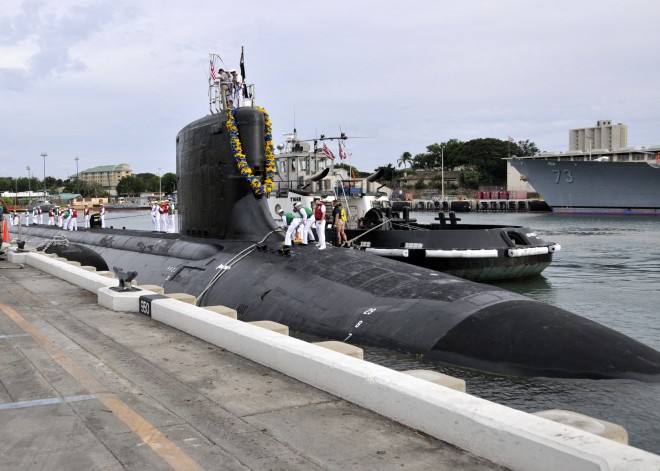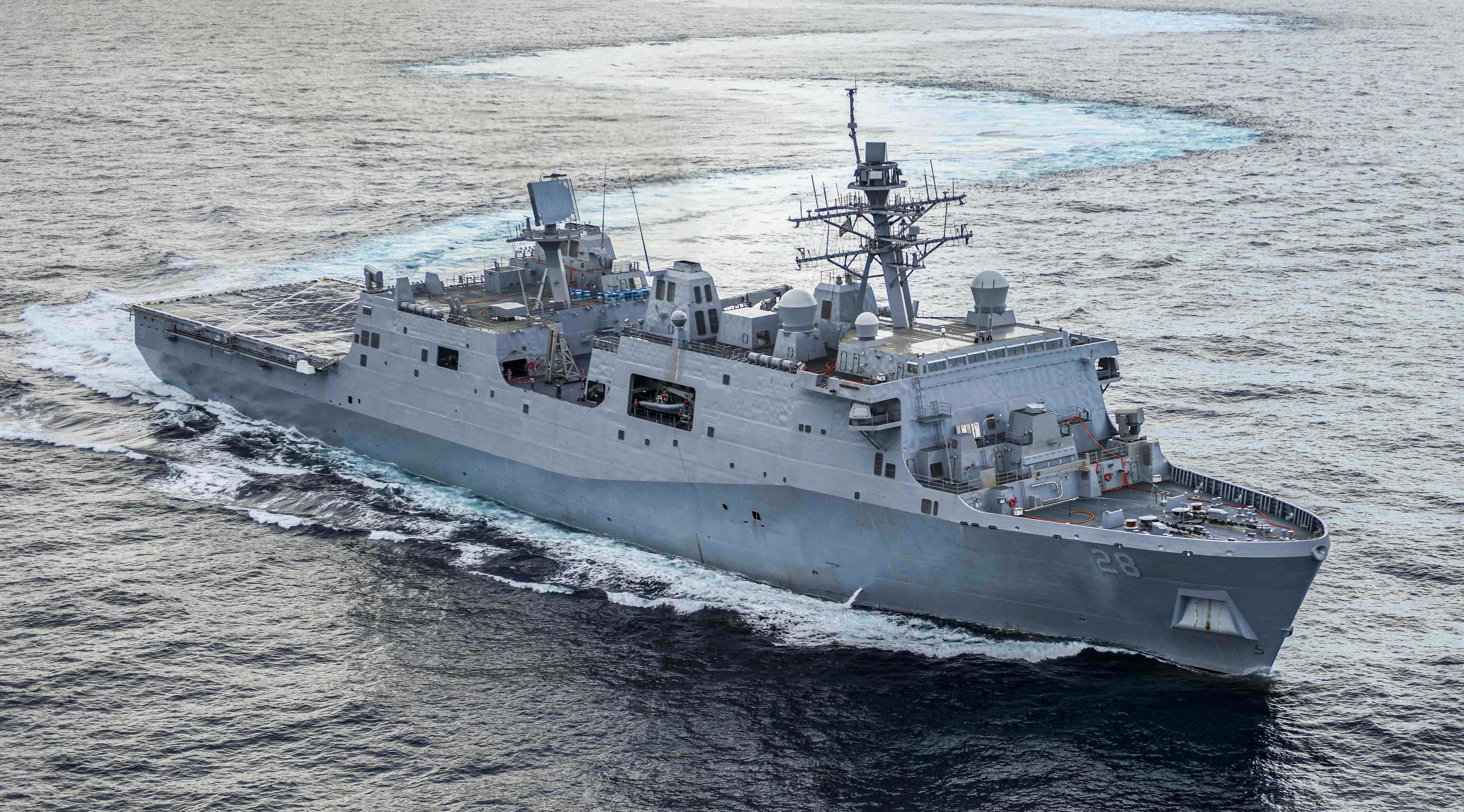Two weeks before budget-makers face the fiscal cliff deadline, there continues to be a great deal of uncertainty within the Pentagon. If the sequestration trigger goes into effect, program offices will be forced to cut billions of dollars from line items across the board. But within the Navy’s shipbuilding office, planners are already dealing with cuts that could impact the Virginia-class submarine program. The Navy and Congress have fought hard to institute a buy-rate of two Virginia-class boats a year, laying the groundwork for a five-year buy of the newest fast attack boat, beginning in 2014. But when the Navy delivered its budget request earlier this year, one submarine had been moved from the front of the line to the back so that budget planners could meet spending top lines mandated by last year’s Budget Control Act.
“We did not have sufficient headroom to fully fund the second boat in 2014,” Sean Stackley, the Navy’s top acquisition official, told the Senate Armed Services Seapower Subcommittee in April.
With a price tag of more than $2 billion, it’s easy to see how a submarine that’s two years away from construction ended up on the chopping block. But the costs associated with each boat have come down significantly since the program began, and opponents of the cut say removing one boat from the program now could reverse that trend.

The Navy estimates that sliding the submarine back to Fiscal Year 2014 from 2018 would reduce the total cost of the other nine boats in the current multiyear deal by roughly $900 million. Cost savings on par with the Navy’s estimate mean building the sub in 2014 would be 35 percent cheaper than doing it four years later. Virginia-class shipbuilders General Dynamic Electric Boat and Huntington Ingalls Industries’ Newport News Shipbuilding add that the continuity of two boats in 2014 would help maintain stability between the supplier base and the workforce.
As a program, the Virginia-class has been extremely successful. A December 2011 Select Acquisition Report released by the Department of Defense noted that the program is, “demonstrating improved cost and schedule efficiency” and a review of program costs and timelines shows that each boat in the Virginia-class has been delivered ahead of schedule and below budget, making the program an outlier in the Navy’s troubled acquisitions portfolio.
Capitol Hill’s defense committees have also taken note. Report language in the annual National Defense Authorization Act (NDAA), passed by the House in May, said “the Virginia-class submarine program continues to deliver on-cost and well ahead of contractual schedule.” The same report also says that cutting the buy-rate “would inject instability into a stable program.”
Both Congress and the Navy say they want to restore funding needed next year for long-lead items and follow-on construction for a second Virginia-class boat in 2014, but even when everyone in Washington wants the same thing, they don’t always agree on how to pay for it. Within the defense committees in Congress, all seem to agree that restoring the second vessel in Fiscal Year 2014 is critical, but they disagree about the funding mechanism needed to do it.
Four Committees, Two Approaches
In major defense acquisition programs, there are two primary ways to procure systems—incrementally or all at once. Incremental funding is reserved for the most expensive systems, such as the Navy’s $12.3 billion Gerald Ford-class aircraft carrier, which will take at least five years to build. Submarines are usually paid for all at once, using a full-funding approach, meaning the total cost of a platform is allocated in a single year and sits in an account for years until expended.
Both the House and Senate Armed Services committees have approved incremental funding, as have Senate appropriators. But the House Defense Appropriations Subcommittee (HAC-D) opposes incremental funding for the second submarine, calling it “comparable to buying items on credit” and saying it would commit future Congresses to the program while reducing transparency. In their version of next year’s spending measure, the HAC-D adds $723 million for advance procurement of a second sub in 2014. The committee also cuts a planned afloat forward staging base (AFSB) ship to add another $38 million to the ledger, but that still leaves the Navy roughly $1.2 billion short.
The Navy says it could allocate funding from other accounts, including leftover cash from prior years, but senior officials admit that it would be difficult to put together the total necessary to fully pay the up-front costs. A senior congressional aide familiar with the Virginia-class program said the full-funding approach is “a tough haul.”
Without budget room to fully fund a second boat, an incremental approach could be the only viable avenue left for legislators. The senior aide said the Navy’s message has been “that some incremental flexibility is needed to get them there.” The Senate’s version of the NDAA supports giving the Navy that flexibility. In its report language, the Senate says “facing the choice between living with a shortfall in requirements and with a very stable production program, departing from the full funding policy for this very important program is an appropriate step at this time.”
Among those supporting incremental funding on the House side is Rep. Joe Courtney (D-CT), whose coastal Connecticut district is home to Naval Submarine Base New London and Virginia-class submarine builder Electric Boat. Courtney has been a key player in boosting production to the two-ship per year buy-rate.
“In an incremental funding approach, the funding already planned for the purchase of nine submarines over the course of the 2014–2018 period could be allocated on a cash flow basis, providing the flexibility and downstream savings needed to fund a tenth boat in that block,” Courtney said in a letter to the chairmen and ranking members of the House and Senate Defense Appropriations subcommittees last month.
Courtney’s assertion seems to be backed by the Navy’s own estimates. In April, Stackley testified that “the up-front cost for that second boat in 2014 is offset by savings across the program in later years”, adding that the cost is “near neutral” to move the boat from 2018 back into the 2014 timeframe.
Even the HAC-D, which opposes the incremental funding solution, says it believes that deferring the second boat until 2018 “will increase the cost of the submarines, result in production inefficiencies, and exacerbate the Navy’s own predicted attack submarine shortfall.”
But when asked what was keeping an agreement on incremental funding from moving ahead, the Capitol Hill aide said “the only holdout is HAC-D.”
If House appropriators refuse to yield on the funding mechanism, it is unlikely the Navy can move ahead with construction of a second Virginia-class submarine in 2014.




